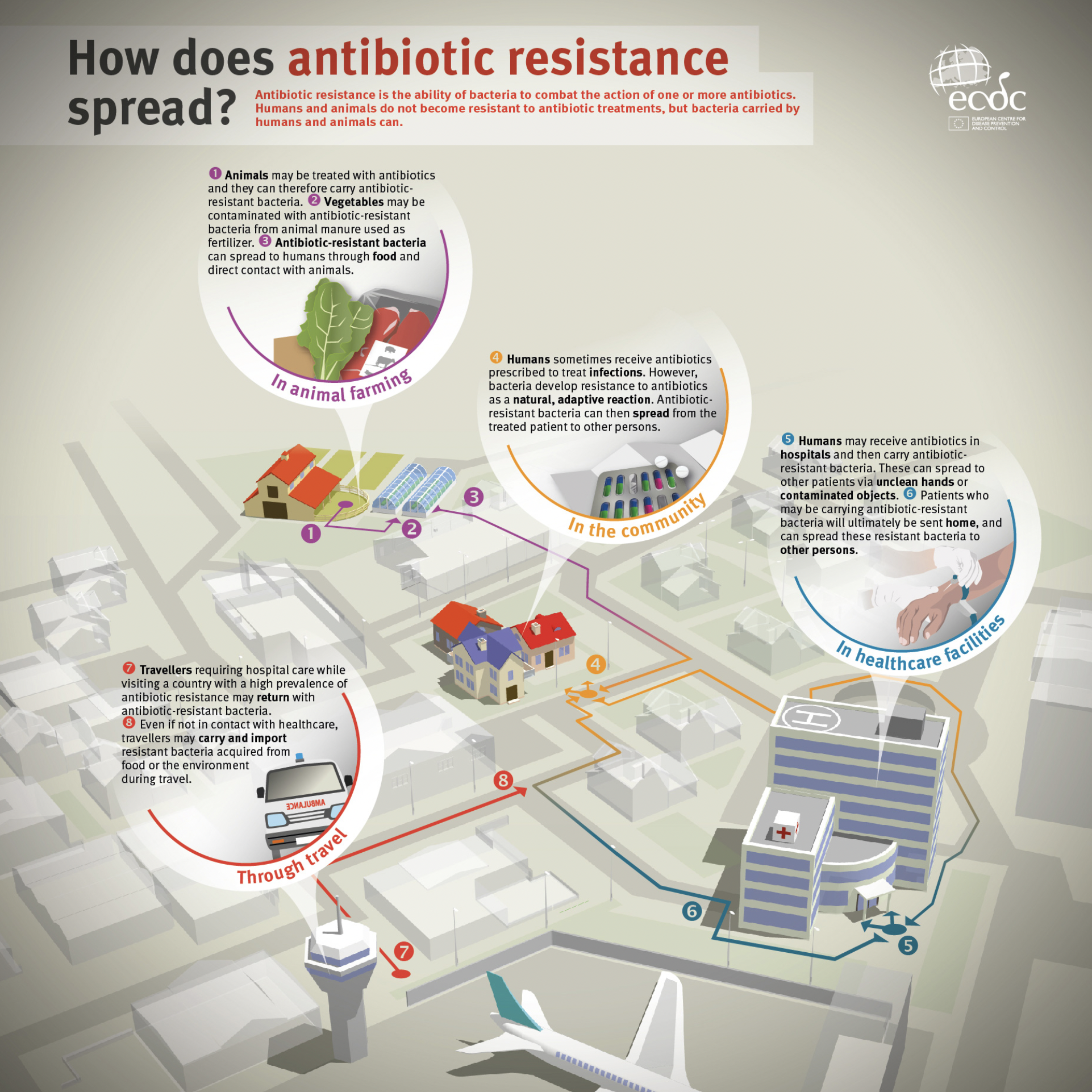
| AIRBUS FINAL ASSEMBLY LINE ASIA ASSEMBLES ITS FIRST A321 AIRCRAFT
Airbus has announced the commissioning of the first A321 aircraft to be assembled at its Final Assembly Line Asia (FAL Tianjin) in Tianjin, China. The breakthrough expands and deepens the collaboration with China’s aviation industry, and demonstrates Airbus’ commitment to enhance its long-term strategic partnership with China.
The FAL in Tianjin officially started the adaptation work to become A321 capable in August 2022. It is the first major upgrade of the assembly line since operations commenced in 2008. FAL Tianjin’s first A321 aircraft is scheduled for delivery in early 2023.
“Since we announced our plans to expand the capability of FAL Tianjin to A321 production last November, I am proud that the Airbus Tianjin team has successfully completed the relevant adaptation work on schedule by working closely with European experts and our suppliers to overcome the impact of COVID-19” said George Xu, Airbus Executive Vice President and Airbus China CEO. “The commissioning of the first A321 aircraft underlines Airbus’ commitment to China, marking a new milestone in the industrial cooperation with our Chinese partners.”
Airbus has four A320 Family assembly facilities around the world: Toulouse, France; Hamburg, Germany; Tianjin, China; and Mobile, United States. By the end of 2022, all commercial aircraft assembly sites will be A321-capable, as part of the industrial strategy to de-risk the ramp up and to meet the rising share of A321 production.
Inaugurated in 2008, FAL Tianjin was the first Airbus commercial aircraft assembly line outside Europe. In the same year, the first aircraft sections arrived on site. Since its first A320 delivery in 2009, FAL Tianjin has delivered more than 600 aircraft over its 14 years in operation. It has become a role model of successful Sino-European cooperation.
The A321neo is the longest-fuselage member of Airbus’ best-selling, single-aisle A320 Family, comfortably seating as many as 244 passengers in a higher-density arrangement, with a longest range reaching 4,700nm/8,700km. Featuring the widest single-aisle cabin in the sky, the A320neo Family offers a 20 % reduction in fuel consumption and CO2 as well as a 50% noise reduction compared to previous generation aircraft, thanks to incorporating the very latest technologies including new generation engines and Sharklets. By the end of September 2022, the A320neo Family has received over 8,500 firm orders from more than 130 customers worldwide.
| WARNING: ASPIRIN-CONTAINING ANTACID MEDICINES CAN CAUSE BLEEDING

The next time you reach for a nonprescription drug to treat your upset stomach or heartburn, consider whether you should use one of the many antacids that don’t have aspirin.
Why? Aspirin-containing medicines to treat heartburn, sour stomach, acid indigestion or upset stomach can cause stomach or intestinal bleeding, especially in some people, warns the U.S. Food and Drug Administration.
Aspirin is commonly used to reduce pain and fever. It is a nonsteroidal anti-inflammatory drug (NSAID) that can increase the risk of bleeding, including in the stomach and gastrointestinal tract (digestive tract).
“We’re focusing on bleeding risk specifically with antacid-aspirin products used to treat upset stomach or heartburn. We’re not telling people to stop taking aspirin altogether,” says Karen Murry, M.D., Deputy Director of the Office of Nonprescription Drugs at the FDA.
Cases of bleeding are rare. When the FDA reviewed its Adverse Event Reporting System database, it found new cases of serious bleeding caused by aspirin-containing antacid products despite an agency warning in 2009 about such a risk. Some of those patients required a blood transfusion.
“Take a close look at the Drug Facts label. If the product has aspirin, consider choosing something else for your stomach symptoms,” Murry says. “Unless people read the Drug Facts label when they’re looking for stomach symptom relief, they might not even think about the possibility that a stomach medicine could contain aspirin.”
How will you know what over-the-counter (OTC, or nonprescription) medicine to take to get relief from indigestion? The Drug Facts label will not only tell you if the medicine contains aspirin but also will list the risk factors for bleeding. If the medicine has aspirin, consider finding another product. There are plenty of stomach medicines that don’t contain aspirin.
Who’s at Higher Risk of Bleeding
Because aspirin thins the blood, the FDA believes the aspirin in these combination medicines is contributing to major bleeding events. People with one or more risk factors have a higher chance of serious bleeding with aspirin-containing antacid products.
You are at higher risk for bleeding with these products if you:
- Are 60 or older.
- Have a history of stomach ulcers or bleeding problems.
- Take drugs that reduce the ability of your blood to clot (also known as anticoagulants or blood-thinning drugs).
- Take steroid medicine, such as prednisone, to reduce inflammation.
- Take other medicines containing NSAIDs, such as ibuprofen or naproxen.
- Drink three or more alcoholic drinks every day.
Warning signs of stomach or intestinal bleeding include feeling faint, vomiting blood, passing black or bloody stools, or having abdominal pain. Those are signs that you should consult a health care professional right away.
What if you’ve been taking these products for a long time?
“Some people may have been taking aspirin-containing antacid products frequently for a long time. Apart from the bleeding risk, it’s not normal to have frequent or chronic upset stomach or heartburn. You should talk to a health care professional if that’s happening,” Murry says.
Take aspirin regularly? If your health care professional has advised you to take an aspirin a day to help prevent a heart attack or other condition, don’t stop without talking with them first. “Make sure you discuss what kind of medicine you can take in case you get an upset stomach,” Murry says.
How to Settle an upset stomach
People have many alternatives for treating heartburn, sour stomach, acid indigestion and upset stomach. Read the Drug Facts label and look for products that contain an “antacid” or “acid reducer.”
For example, there are numerous nonprescription medicines that contain only an antacid, such as calcium carbonate, magnesium hydroxide, or another antacid,” Murry says. These products can be used to treat heartburn, sour stomach, acid indigestion and upset stomach.
For frequent heartburn, there are acid reducers, such as proton pump inhibitors (esomeprazole, lansoprazole, omeprazole), or H2 blockers (cimetidine, famotidine).

| BOSNIA AND HERZEGOVINA SHOULD TAKE FURTHER MEASURES TO COMPLY WITH THE ISTANBUL CONVENTION
In its first baseline evaluation report on Bosnia and Herzegovina, the Council of Europe Group of Experts on Action against Violence against Women and Domestic Violence (GREVIO) highlights positive legal and policy measures introduced by the authorities, but also outlines measures to meet requirements of the Convention on Preventing and Combating Violence against Women and Domestic Violence (Istanbul Convention).
In its report GREVIO welcomes policies to secure gender equality, including gender-sensitive budgeting in ministries at the state and entity levels and the establishment of contact persons for gender equality. The report highlights positive steps, including the passing of new criminal legislation introducing the offences of forced genital mutilation (FGM), forced sterilisation, stalking, sexual harassment and forced marriage. GREVIO praises the provision of specialist victim support in domestic violence proceedings, via a “person of trust”, assisting victims and attending all their meetings and hearings before public institutions, including police and courts.
However, basing its findings on information obtained from the authorities, civil society and other sources, including an on-site visit to Bosnia and Herzegovina, GREVIO identifies challenges that require “urgent action” by the authorities to comply with the treaty.
GREVIO urges the authorities to amend the sexual offences provided under the national, entity-level and Brčko District criminal codes to fully incorporate the notion of lack of freely given consent as required by the Istanbul Convention and to specify the type of non-consensual sexual acts that are criminalised, in line with the convention. They furthermore should adopt measures to ensure that any offence of sexual violence applies between former or current spouses or partners and ensure proportionate and dissuasive sanctions for all sexual acts without the victim’s consent, irrespective of personal characteristics.
GREVIO also urges the authorities to set up rape crisis and/or sexual violence referral centres that provide immediate medical care, trauma support, forensic examinations and psychological assistance by qualified professionals, in line with treaty standards. Regarding custody and visitation rights, GREVIO urges the authorities to take “priority actions” to ensure the safety of victims and their children and to “break the cycle of power and abuse” exercised by perpetrators
Finally, as required by the treaty, Bosnia and Herzegovina must ensure that one or more telephone helplines providing support to victims of all forms of violence against women are reachable in the whole territory, around the clock, completely free of charge and with due respect for the confidentiality and anonymity. Based on this report, the Committee of the Parties, which is composed of the representatives of the State Parties to the Convention, will publish its recommendations to Bosnia and Herzegovina in December this year.

| STATE AID: COMMISSION APPROVES €1.1 BILLION AUSTRIAN SCHEME TO SUPPORT COMPANIES FACING INCREASED ENERGY COSTS IN CONTEXT OF RUSSIA’S WAR
AGAINST UKRAINE
The European Commission has approved a €1.1 billion Austrian scheme to support companies facing increased energy costs in the context of Russia’s war against Ukraine. The scheme was approved under the State aid Temporary Crisis Framework, adopted by the Commission, recognising that the EU economy is experiencing a serious disturbance.
The Austrian measure
Austria notified to the Commission, under the Temporary Crisis Framework, a €1.1 billion scheme to support companies facing increased energy costs in the context of Russia’s war against Ukraine.
The measure will be open to companies with an annual turnover below €700,000; and to energy-intensive businesses.
The measure aims at covering part of the additional energy costs linked to exceptionally severe increases in natural gas and electricity prices.
Under this measure, which will be administered by the Austrian Promotional Bank, the aid will take the form of direct grants up to €400,000 per company and up to €2 million for energy intensive businesses. Furthermore, the latter are eligible for increased support under the measure if they have incurred operating losses, up to €25 million (and up to €50 million if they are active in particularly affected sectors). The scheme will run until 30 June 2023 and will cover energy costs incurred by the beneficiaries between 1 February and 30 September 2022.
The Commission found that the Austrian scheme is in line with the conditions set out in the Temporary Crisis Framework. In particular, the individual aid amount will not exceed 50% of the eligible costs for the maximum aid ceiling of €4 million. For beneficiaries qualifying as energy-intensive businesses, the overall aid per beneficiary will not exceed 65% of the eligible costs, or 80% for particularly affected sectors in Annex 1 or the maximum aid ceiling of €50 or €150 million respectively. In addition, the aid will be granted before 31 December 2023.
Furthermore, the public support will come subject to conditions to limit undue distortions of competition, including safeguards to ensure that companies benefiting from higher aid amounts and intensities implement the recommendations of mandatory energy audit reports.
The Commission concluded that the Austrian scheme is necessary, appropriate and proportionate to remedy a serious disturbance in the economy of a Member State, in line with Article 107(3)(b) TFEU and the conditions set out in the Temporary Crisis Framework.
On this basis, the Commission approved the aid measure under EU State aid rules.
| EUROJUST COORDINATES ACTION AGAINST MASSIVE INVESTMENT FRAUD WITH HUNDREDS OF THOUSANDS OF VICTIMS WORLDWIDE

At the request of the Spanish, German and Finnish authorities, Eurojust and Europol have supported an action against a massive investment fraud involving the use of cryptocurrencies. The victims of this major online fraud are estimated to be in the hundreds of thousands. During operations on 8 and 9 November in Albania, Bulgaria, Georgia, North Macedonia and Ukraine, 15 call centres were searched and 5 suspects arrested.
The suspects allegedly belong to an organised crime group (OCG) believed to be involved in an investment fraud using cryptocurrencies. The criminal network used dozens of call centres in several countries and hundreds of online platforms to commit the fraud.
The suspects presented themselves as brokers who would help the investors earn large amounts of money through small investments. In reality, the OCG deceived the victims by gaining their trust online as well as through professionally set-up call centres or other modes of so-called social engineering. This encouraged victims to invest via web platforms controlled by the criminal organisation, which resulted in them losing large sums of money.
The scale of the investigations in such cases is so far unprecedented. As revealed by the investigations, hundreds of thousands of investors all over the world have fallen victim to the fraud, dating back at least to 2016. The damage caused is estimated at EUR 50 million per quarter. Investigations into the cyber scam began in 2018, with seven countries having opened judicial cases against the OCG to date.
Eurojust facilitated judicial cooperation in this case by setting up and funding a joint investigation team (JIT), set up at the request of the Swedish authorities and also involving Albania, Finland, Georgia, Germany, Latvia, Spain and Ukraine. A total of 13 coordination meetings were organised to coordinate the national investigations and prepare for the action day. The Agency also facilitated the execution of International Arrest Warrants, European Investigation Orders and Letters of Request to third countries.
Europol provided analytical support to the investigations and organised seven operational meetings. To support the action day on 8 and 9 November 2022, Eurojust set up a coordination centre to enable rapid cooperation between the involved judicial authorities.
As a result, 15 call centres were searched (6 in Albania, 5 in Georgia, 3 in Ukraine and 1 in North Macedonia), as well as 27 other locations and 5 vehicles. 5 suspects have been arrested, 4 in Albania and 1 in Georgia. Approximately 50 hearings (suspects and witnesses) have been conducted. Seizures include over 500 electronic devices (computers, laptops, USBs, hard disks), more than EUR 340 000 in cash, several mobile phones, several bank accounts, cryptocurrency wallets, properties, ID documents and bank cards, and hundreds of other documents. Potential investors are advised to be extra vigilant when investing online and to check whether websites belong to legitimately operating enterprises.
| EDA PROJECT HELPS IMPROVE COMMUNICATION WITH UNDERWATER ROBOTS

Underwater robots, such as autonomous underwater vehicles (AUV), have the potential to take over lengthy and labour-intensive missions in dangerous areas from navy ship crews and special forces. As a result, the role of mobile unmanned platforms in military scenarios is becoming more and more important. But their integration into the network of surface ships, submarines, sensor nodes and surface gateway buoys is crucial.
This requires underwater acoustic networks, as well as the capability to adapt autonomously to communication conditions, for example by switching between frequency bands and data rates, so that network assets stay connected for extensive operation times without recovery and redeployment.
A four-year European Defense Agency (EDA) project known as SALSA, funded by five EDA Member States, developed a smart adaptive protocol stack for the development of flexible and self-configurable underwater acoustic networks. Launched on 30 October 2018, the final meeting took place on 25-27 October 2022. This meeting was used to reflect upon the technical achievements gained within the project, regarding the requirements set in an early stage.
Also, strategic decisions were taken on what technical results were fit to be published in a standard.
The Netherlands was the lead nation in the project, working with Germany, Norway, Sweden and Finland. The project involved a consortium of industries and research establishments from these five Member States. In this regard, the main objectives defined for this project were linked to the development and standardisation of a protocol stack for self-configurable underwater acoustic networks that autonomously adapt to changing environmental conditions and operational needs.
NEXT STEPS ON STANDARDISATION
Under the SALSA project, work has been carried out at the two levels of the physical and the network layer.
At the physical layer, where bits are converted into sound and vice versa, the JANUS underwater communications standard (STANAG 4748/ANEP-87) was applied for first contact, after which the more robust and flexible frequency repetition spread spectrum (FRSS) modulation was employed to enable the required heavy-duty communication in the military scenario at hand. In addition, at the network layer, the versatile gossiping in underwater mobile ad-hoc networks (GUWMANET) routing protocol was employed with the accompanying application-layer protocol generic underwater application language (GUWAL). The decisions for adaptations, and their synchronization within the network to maintain interoperability, were controlled by an adaptivity module inside the network layer.
During the implementation of the project, a successful demonstration was performed of self-configurable underwater acoustic networks in military scenarios using up to 20 network nodes.
Based on the results provided, the navies of the five EDA Member States, supported by their national research establishments, have the intention to submit a proposal for a NATO Standardisation Agreement. The consortium is still seeking for the best approach to initiate the NATO standardisation process; whether it should be extension of a current standard or a new standard, and how to keep all partners involved given that the EDA-SALSA project has now been closed.
The SALSA consortium hopes to engage in discussions on new use cases or the needs of potential clients for their adaptive underwater communication protocols. These aspects underline the high level of ambition to continue international collaboration on underwater communications as over the years a full workbench has been developed within this consortium.
Source : European Defense Agency
| THE EUROPEAN COURT OF HUMAN RIGHTS CONDEMNS FRANCE

By invoking the right to freedom of expression, the European Court of Human Rights (ECHR) has ordered France to pay 9,800 euros in damages and legal costs to a feminist activist who had been condemned by a French court to a five year suspended prison term in 2017.
On December 20, 2013, Eloïse Bouton, a 30-year-old French woman, entered the Madeleine Church in Paris, where a dozen people and a choir were rehearsing Christmas carols. She then stood before the altar, bare-chested and covered in slogans, and proceeded to mime an abortion with a piece of beef liver.
She had been a member of the ‘Femen’ movement, an international women’s rights organisation created in Ukraine in 2008 and known for the provocative actions of its members who protest topless to combat the image of women as sexual objects.
She was acting as part of an international action organised by her movement to denounce the Church’s position on voluntary termination of pregnancy.
Her action was covered by the media. Photographs of the activist before the altar, veiled and wearing a crown of thorns were published with her chest bare, and holding two pieces of beef liver in her hands, a symbol of the aborted baby Jesus. Painted on her chest and back, were the slogan : ‘344th slut’ (…) in reference to an open letter of 343 French women who admitted to having an abortion in 1971.
The priest decided to lodge a complaint and to bring a civil action. The activist was sentenced by the criminal court to one month’s suspended prison sentence for indecent exposure. She appealed the decision, but the Paris Court of Appeal upheld her conviction. And the Court of Cassation rejected her appeal.
The decision of the ECHR
On June 3, 2019 Eloïse Bouton decided to refer the case to the European Court of Human Rights. In her application to the Court, she challenged her conviction and argued that there had been a violation of her right to freedom of expression. The question put to the Court was whether the activist knew, or on the contrary should have known, whether the conduct she engaged in and for which she was effectively convicted was in the nature of an act that could give rise to criminal liability under Article 222-32 of the French Criminal Code relating to indecent exposure.
The Court found that the activist “could reasonably have expected that her conduct would entail criminal consequences for her”. They also noted that the domestic courts could “legitimately have envisaged punishing this conduct [in a public place]”, as the applicant had exhibited a part of her body, described as a “sexual part”, in accordance with French criminal law.
However, the judges noted that the applicant’s action had the character of a militant action and sought to convey the ideas of the Femen movement, on whose behalf she was acting, concerning a public and societal debate, in particular the position taken by the Catholic Church, which was considered to be “a sensitive and controversial issue” with regard to women’s right to have recourse to abortion and, more generally, to the right of women to be able to dispose freely of their bodies.
In its assessment, the ECHR stated that it considered that “the impugned conviction, which took place in the context of the applicant’s activist ‘performance’, constituted an interference with the exercise of the right to freedom of expression protected by Article 10 § 1 of the Convention”.
The ECHR also recalled that “the sole purpose of the applicant’s action, for which no insulting or hateful conduct was alleged, however shocking it may have been to others in view of the nudity she imposed in a public place, which is punishable under domestic criminal law, was to contribute, by means of a deliberately provocative performance, to the public debate on women’s rights, and more specifically on the right to abortion”.
As a result, and in view of the elements noted by the judges, the national courts did not balance the interests at stake in accordance with the case law established by the European Court of Human Rights. The judges added that all the reasons given by the domestic courts for sentencing the Femen activist were not proportionate to the legitimate aims pursued.
This led to the condemnation of France by the European Court of Human Rights and the payment for legal costs and moral damage to the applicant.

| RHAETIAN RAILWAY’S WORLD RECORD ATTEMPT HAS BEEN SUCCESSFUL
It has been officially confirmed and accomplished: on October 29 2022, Rhaetian Railway (RhB) took the longest narrow gauge passenger train in the world on the UNESCO World Heritage route from the Albula Tunnel in Preda to the world-famous Landwasser Viaduct just outside Filisur. Several thousand guests and railway fans attended the public event in Bergün or positioned themselves along the route mentioned above to experience this unique journey.
RhB travelled along the Albula Line with 25 fourpart Capricorn railcars from leading Swiss manufacturer Stadler. The 1,906-metre-long record train was lined up like a string of pearls in the Albula Tunnel during the night from Friday to Saturday and on Saturday morning. It then set off in Preda at 2.20 pm. Shortly after 3.30 pm, the record-breaking train reached its destination: the spectacular crossing of the Landwasser Viaduct. “After intensive preparation, we are overjoyed to have achieved this world record. Not only did we have a wonderful railway festival here in Bergün, but we were able to present ourselves around the world as a fascinating and innovative mountain railway thanks to our dedicated partners, sponsors and an incredibly dedicated team,” says Renato Fasciati, Director of RhB shortly after the world record was set. The success of the world record was officially confirmed on site by GUINNESS WORLD RECORDS™.
An impressive railway festival
A festival site was built outside Bergün where around 3,000 visitors attended the world record attempt. On the festival site, Märklin also presented the world record train in mini format – with 25 Capricorn LGB model trains and a length of 80 metres on a scale of 1:22.5. The world record attempt itself was broadcast on Blick TV with an approximately two-hour programme and was included in coverage by numerous TV stations around the world. More than 120 media representatives from 15 countries followed the world record live.
The RhB partners showed their skills at the station itself. For example, the track construction company SERSA was present with a track construction machine and a locomotive simulator. Expertise partners ABB and Repower provided information about electromobility. Siemens enabled a fantastic rail experience with augmented reality. The Albula Railway Museum was open, while Märklin and BEMO also showed various model railways. The entire railway village of Bergün was on the move.
Facts and figures about the world record attempt
- The train consisted of 25 compositions, each with four carriages of the new Capricorn railcars, and had a total length of 1,906 metres.
- “Capricorn” is the Rhaeto-Romanic term for ibex.
- The world-record route from Preda to Alvaneu is 24,930 metres long.
- The train covered a difference in altitude of 789.4 metres (Preda = 1,788.7 m a.s.l.; Alvaneu = 999.3 m a.s.l.).
- The world record-breaking journey crossed 48 bridges and went through 22 tunnels.
- The largest viaduct on the world record route is the world-famous Landwasser Viaduct just after Filisur with a length of 142 metres and a height of 65 metres.
- The longest tunnel on the world record route is the Greifenstein Tunnel just before Filisur which is 698 metres long.
- The attempt to break the world record generated 4,000 kWh of braking energy (recuperation).
- The world-record train travelled at a speed of 30 to 35 km/h.
- The record-breaking journey took around an hour.
- The weight of the record-breaking train was around 2,990 tonnes.
- Communication within the train was ensured by means of a field telephone almost two kilometres long from the Civil Defence.
- In addition, 7 train drivers and 21 technicians were at work on the train to ensure its operability.
| 35 000 ANNUAL DEATHS FROM ANTIMICROBIAL RESISTANCE IN THE EU/EEA
More than 35 000 people die from antimicrobial-resistant infections in the EU/EEA each year, according to estimates presented in a new report released today. The estimated number of deaths in the report examines the years 2016-2020 and shows an increase from previous estimates. The health impact of antimicrobial resistance (AMR) is comparable to that of influenza, tuberculosis and HIV/AIDS combined.
“We see concerning increases in the number of deaths attributable to infections with antimicrobial-resistant bacteria, especially those that are resistant to last-line antimicrobial treatment” said Andrea Ammon, ECDC Director. “Each day, nearly 100 people die from these infections in the EU/EEA. Further efforts are needed to continue to reduce unnecessary antimicrobial use, improve infection prevention and control practices, design and implement antimicrobial stewardship programmes and ensure adequate microbiological capacity at national level.”

Overall, the latest data show significantly increasing trends in the number of infections and attributable deaths for almost all bacterium–antibiotic resistance combinations, especially in healthcare settings. In 2021, the number of reported cases of Acinetobacter species resistant to different antimicrobial groups was more than double (+121%) than the average for 2018−2019. Another example is the percentage of Klebsiella pneumoniae cases that are resistant to carbapenems – an antibiotic often used as a last resort – of which there was a 31% increase in 2020 and a further 20% increase in 2021. These are pathogens that are difficult to eradicate once established in healthcare settings. Moreover, the number of Candida auris reported cases nearly doubled between 2020 and 2021 and were considerably higher than in previous years. Candida auris is a fungal pathogen that causes outbreaks of invasive healthcare-associated infections and can be resistant to multiple antifungal agents.
A decrease of 23% in total antimicrobial consumption in humans, in the primary care and hospital sectors combined, was observed in the EU/EEA during the period 2012–2021. Although this represents an achievement, there has been an increase in the proportion of ‘broad-spectrum’ antibiotics that were used, in particular in hospitals. Between 2012 and 2021 in hospitals, consumption of ‘broad-spectrum’ antibiotics increased by 15%, consumption of carbapenems by 34% and the proportion of ‘Reserve’ antibiotics – that is antibiotics that should be reserved for treatment of confirmed or suspected multidrug-resistant infections – more than doubled in the same timeframe.
The reported AMR percentages varied widely among countries for several bacterial species–antimicrobial group combinations. In general, the lowest AMR percentages were reported by countries in the north of Europe, and the highest by countries in the south and east of Europe.


